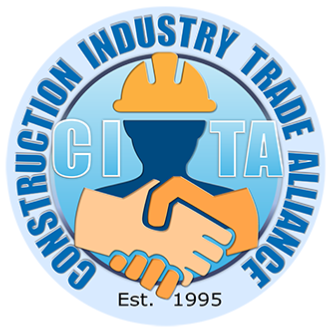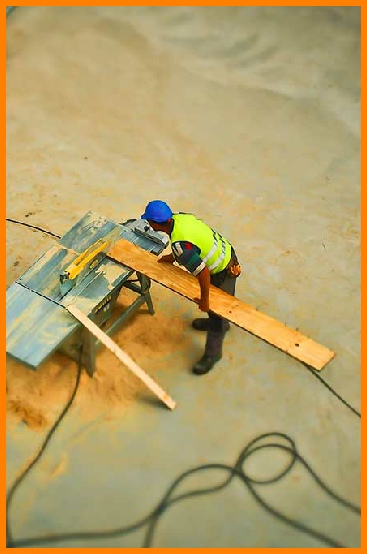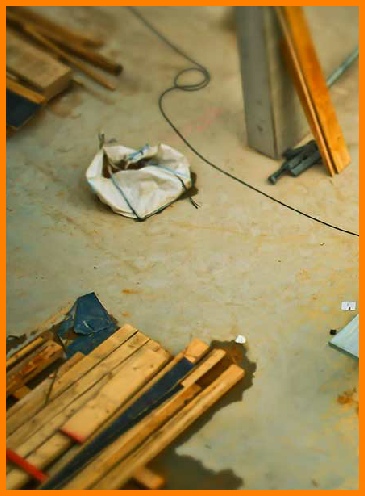


Copyright © CITA Construction Industry Trade Alliance - UK Building Association. Established 1995

BUILDING TRADE ASSOCIATION







CONSTRUCTION INDUSTRY TRADE ALLIANCE

CITA is a UK Trade Association for the Construction & Building Industry
Tel: 0845 250 4390 Fax: 0845 250 4391




Reducing the Risk on Construction Sites




Five ways to reduce risk on Construction Sites
- For small construction sites
- For small construction businesses
- For Construction Workers
Construction is a high-risk industry. Below are 5 pieces of advice that will help you keep safe and healthy.
Remember to :
- Plan and organise what you do
- Make sure you’re trained and competent and know the special risks in your trade
- Raise problems with your supervisor or safety rep









1 THE BASICS
Tidy sites and decent welfare
Tidy sites and decent welfare are the basics of a good site.
Slips and trips are the most common cause of injuries at work.
An untidy site is a poorly managed site and poor welfare facilities can lead to ill health.
All sites need decent welfare facilities. The minimum welfare requirements are:
- Clean toilets
- Running hot and cold water with soap and towels
- Basins large enough to immerse your arms up to the elbows
- Drinking water
- Somewhere warm, dry and clean to sit and eat

2 FALLS FROM HEIGHT
Falls from height are the biggest cause of fatal and serious injuries in construction. They account for 50% of all deaths. Many accidents involve falls from roofs, through fragile materials, from ladders and from leading edges.
Generally, make sure you:
- Work from a safe and secure place or platform with proper edge protection
- Use scaffolds and scaffold towers that are competently erected
- Use powered access equipment safely.
- Protect holes and leading edges, eg with guardrails and toe boards.
When working on roofs never:
- Work in poor weather
- Work on sloping roofs without edge protection
- Throw down waste or equipment
Take care when working on or near fragile material.
Ladders:
- Only use for light work of short duration if there’s no safer alternative
- Angle and secure them to prevent slipping (1 out or 4 up)
- Always make sure ladders are properly maintained
- Never over-reach
3 MANUAL HANDLING
Manual handling injuries from working with heavy, awkward materials, often in cold and wet conditions, are one of the most common reasons why workers leave construction.
Injuries are made worse by repetitive jobs, such as laying heavy blocks. Protect yourself and reduce the strain.
- Use mechanical means, eg hoists, teleporters and chutes rather than hods
- Choose equipment suitable for the job and keep it maintained
- Change to lighter materials, bags etc
- Avoid repetitive handling
- Avoid awkward movements
4 TRANSPORT
Workplace transport incidents are the second most common cause of fatalities after falls from height. When people and vehicles collide, people come off worse - so keep them apart!
- Use barriers and warning signs to separate vehicles and people
- Create clearance around slewing vehicles
- Avoid reversing - where you can’t, use trained banksmen
- Make sure loads are secure
- Don’t use plant and vehicles on dangerous slopes
- Only take passengers on vehicles designed to take them
- Make sure vehicles are maintained and operators are trained
5 ASBESTOS
Many buildings in the UK contain asbestos. If you’re thinking of working in a building that was built or renovated up until the 1980s, you should assume it contains asbestos until proved otherwise.
The main asbestos-containing materials (ACMs) are lagging, asbestos insulating board, sprayed insulation, decorative coatings and asbestos cement.
- Check if there is any ACM
- Find out what you need to do to work safely
- If in any doubt, leave it to the experts!



This article use information obtained from HSE Health and Safety Leaflet and is reproduced under the terms of the Open Government Licence.


































